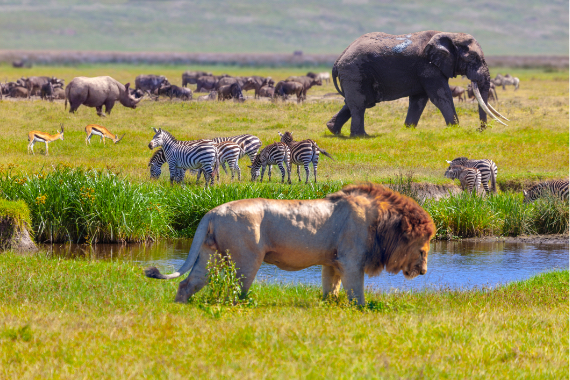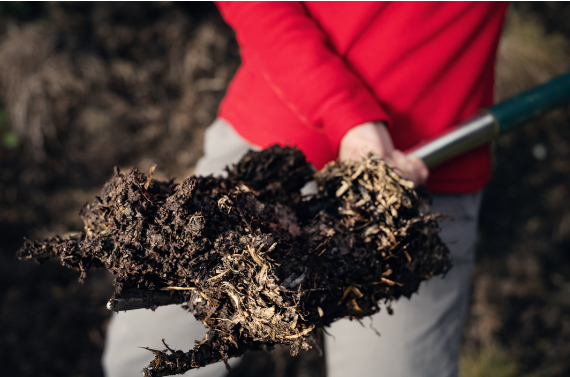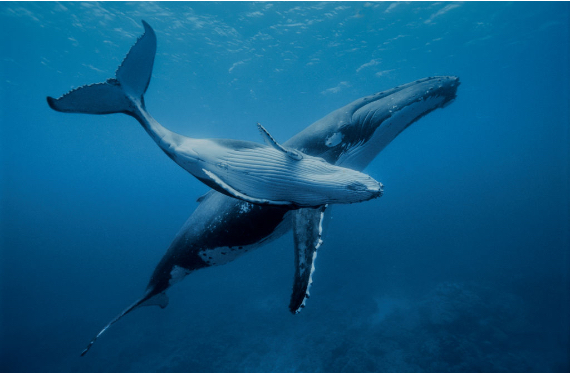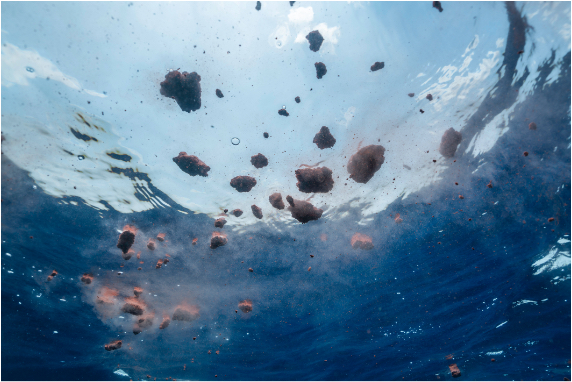Before modern humans came along, our planet was teeming with giants: millions of whales roamed the seas, while megafauna such as mammoths, mastodons and elephant-sized sloths dominated the land, travelling great distances and consuming vast quantities of food. And pooping a lot. All that nutrient-rich excrement fuelled a global conveyor belt of nutrients that fertilised the biosphere from the depths of the ocean to the tops of the mountains. But most of the megafauna went extinct at the end of the last Ice Age (partly our fault), followed more recently by centuries of whaling, and the continuing extinction of the natural world. According to a study published in the journal PNAS, this once mighty animal-driven nutrient recycling pump now operates at just 6% of its former capacity, depriving ecosystems such as the Amazon rainforest of vital nutrients.
Wild animals are the planet’s circulatory system
Biologist Joe Roman, author of the new book Eat, Poop, Die: how animals make our world, suggests that we should think of wild animals as the planet’s circulatory system, transporting nutrients in the same way that our blood does. He writes: “And much as poor circulation can lead to the loss of a limb, the decline in animal populations and migration can cut off the nutrient supply to some of the world’s richest habitats, making them less productive and more vulnerable to climate change.”

In today’s world, where the megafauna have largely disappeared and wildlife is in sharp decline, domesticated livestock such as cows and pigs, together with humans, make up a whopping 96% of mammalian biomass. But the nutrients in the excrement we and our animals produce, as well as in the chemical fertilisers we apply to our fields, are not returned to natural ecosystems. Instead, the nitrogen and phosphorus from wastewater and agricultural runoff end up in lakes and oceans, triggering harmful algal blooms that deplete oxygen and kill fish on a massive scale. But while humans have not learned to recycle nutrients, nature has been doing it efficiently for millions of years, thanks in part to Earth’s largest creatures.
The whale pump
Some scientists call it the “whale pump”, others the “poop loop”, but whatever you call it, it’s the system by which whale excrement helps to regulate the climate and nutrient flow in the ocean. As Joe Roman explains in an interview, whales influence marine ecosystems “by diving, feeding and taking the nutrients from deep beneath the ocean surface, coming to the surface and releasing these faecal plumes.” Whales usually relieve themselves near the surface because, as you might imagine, the pressure of the ocean depths makes defecation difficult. Their excrement and urine, rich in iron, nitrogen and phosphorous, fertilises phytoplankton, which grow, photosynthesise and produce oxygen in the air we breathe, while sequestering carbon, thereby mitigating climate change. So by boosting phytoplankton growth, whale poop actually helps cool the planet.

But the effects go further. The fertilised phytoplankton provide food for forage fish such as anchovies and sardines, which become prey for predators such as seabirds and marine mammals, transferring nutrients from the deep ocean up the food chain. When seabirds return to land, their excrement—rich in phosphorus, nitrogen and potassium—accumulates in huge quantities around their breeding colonies. Humans have long harvested this resource, known as guano, as a potent fertiliser.

Anadromous fish, such as salmon, also help move nutrients across the ocean-land boundary. After foraging in the ocean, salmon swim up rivers to spawn, becoming lunch for animals such as bears and other scavengers, and ultimately enriching the forest floor. On the west coast of North America, researchers can estimate historical salmon runs by analysing the growth rings of ancient trees along salmon streams far from the ocean, highlighting the profound link between ocean nutrients and forest vitality.
More whales = more fish
Whaling nations such as Japan have long argued that whales eat too many of the fish that humans value and should be culled to save our fisheries. Researchers now understand that whales play a key role in pumping up nutrients from the deep ocean through their feeding and defecation, resulting in more marine life and a richer ecosystem. These nutrients are then carried ashore by animals such as seabirds and salmon, and make their way up the food chain, perhaps ending up in the droppings of vultures perched high in mountain regions. When it rains, the nitrogen and phosphorus contained in the droppings dissolve in water and trickle down the mountainside, eventually reaching the ocean and completing the millennia-old nutrient cycle that sustains the biosphere.

So if animals are the circulatory system of the planet, transporting and recycling nutrients, then the “whale pump” must be the heart, providing the impulse that starts the cycle. And the heart is also the embodiment of love. But while love may make the world go round, as so many songs have told us, it turns out that what makes the natural world go round is poop.
Comments on this publication